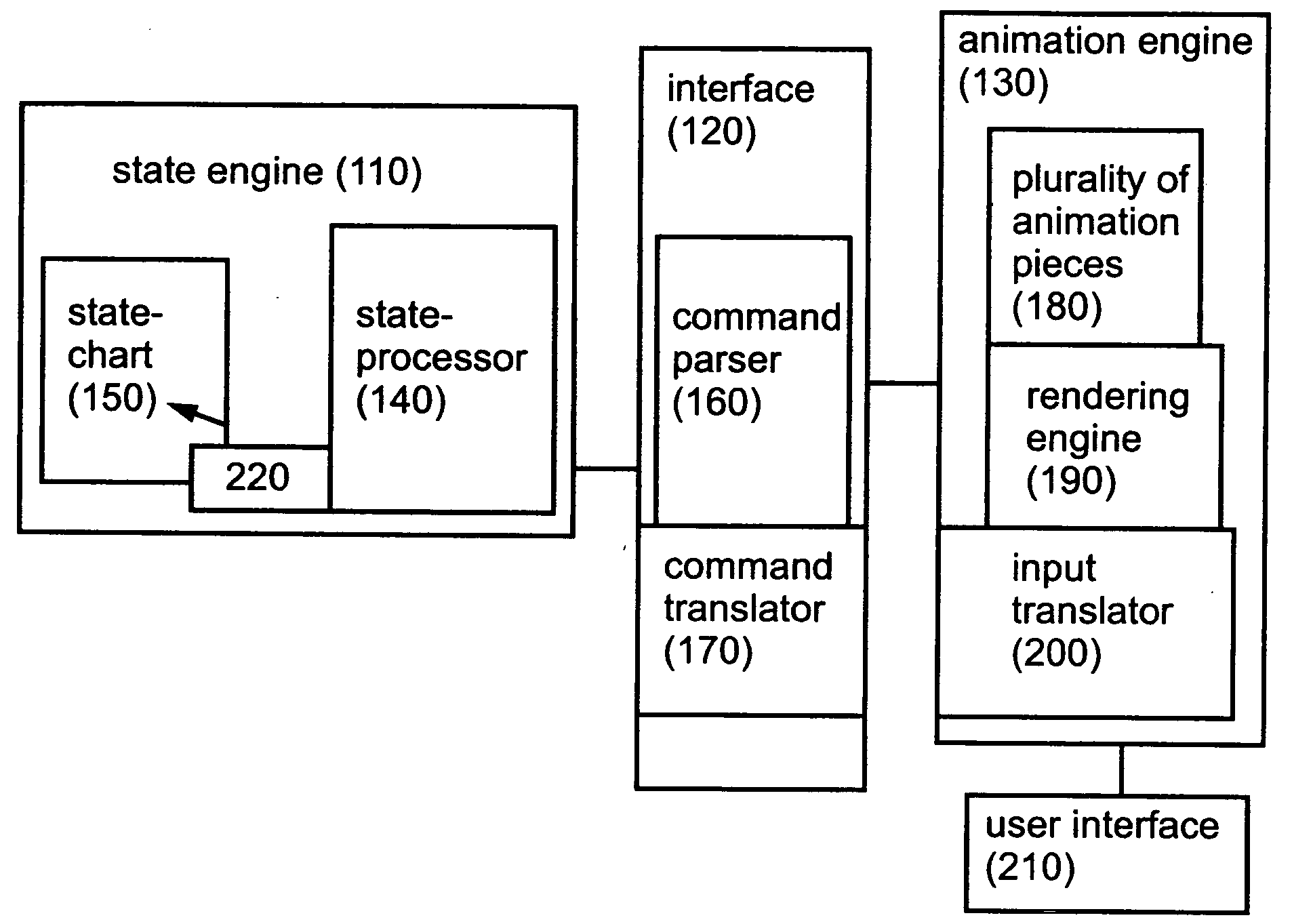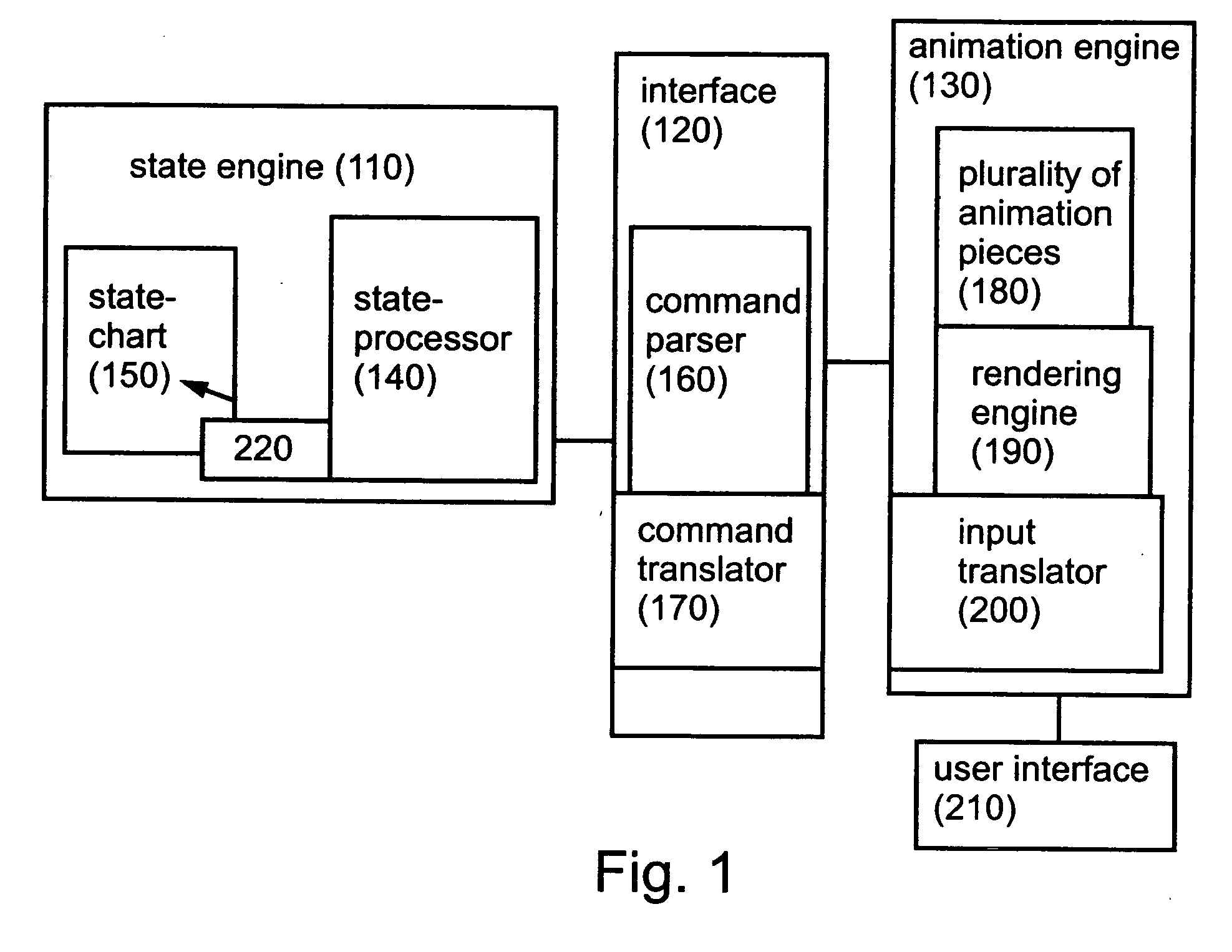Reactive animation
a technology of reactive animation and system, applied in the field of reactive animation, can solve the problems of background art that background art does not teach or suggest a system or method, so as to enhance the representation of the system and facilitate us
- Summary
- Abstract
- Description
- Claims
- Application Information
AI Technical Summary
Benefits of technology
Problems solved by technology
Method used
Image
Examples
example 1
Modeling Thymocyte Movement
[0195] To demonstrate the conversion of data into specification, the way thymocytes move in the thymus is followed as a non-limiting example. Thymocytes receive signals from different cells in different locations. To be certain that signals are received at the right time is actually to be certain that the right thymocyte is in the right place at the right time. The molecules responsible for directing cells along a gradient path are called chemokines. The roles of four chemokines are considered: TECK, SDF, MDC and SLC. Thymocytes search their environment for chemokines and move according to the chemokine gradient. Therefore, (1) the simulating gradient must be correct and (2) the thymocyte must respond only to gradients it can currently interact with.
[0196] To determine the right gradient, the scientific literature was surveyed to learn which chemokine is expressed where and at what level. This information is available from different papers, ranging from ...
example 2
Modeling Epithelial Cells
[0199] Another example of specification is the inclusion of epithelial cells in the model. Epithelial cells in the thymus are stationary, yet their behavior is reactive and changes continuously in response to various stimuli. The literature divides epithelial cells into many types. Since most of the work has been done using microscopy, the cell types are usually separated by their location and their size. To this microscopic division, temporal behavior was added, which is the expression of different chemokines and cytokines in response to different events. For example, medullary epithelial cells have shorter processes (arms) than other epithelial cells and are usually no longer than 30 micrometer in length. Medullary epithelial cells are considered the main elements in a process called negative selection, and have been therefore extensively measured for levels of expression of MHC class I and class II molecules.
[0200] Epithelial cells were characterized as ...
example 3
Modeling a Biological System—C. elegans
[0238] The nematode C. elegans has been extensively studied as a biological system. It is therefore a highly useful model organism, since it has been extensively studied and characterized at the anatomic, genetic and molecular levels. Specifically, the entire cell lineage of C. elegans has been traced, many genetic mutants have been described, and the entire genome is sequenced (Riddle, D. L., Blumenthal, T., Meyer, B. J., Priess, J. R. (eds.): C. elegans II, Cold Spring Harbor Laboratory Press Plainview, N.Y. (1997); The C. elegans Sequencing Consortium: Genome sequence of the nematode C. elegans: a platform for investigating biology. The C. elegans Sequencing Consortium, Science 282 (1998) 2012-2018).
[0239] A scenario based approach was recently used by one of the present inventors to provide formal modeling of C. elegans development, as described in “Formal Modeling of C. elegans Development: A Scenario-Based Approach”; C. Priami (Ed.): CM...
PUM
 Login to View More
Login to View More Abstract
Description
Claims
Application Information
 Login to View More
Login to View More - R&D
- Intellectual Property
- Life Sciences
- Materials
- Tech Scout
- Unparalleled Data Quality
- Higher Quality Content
- 60% Fewer Hallucinations
Browse by: Latest US Patents, China's latest patents, Technical Efficacy Thesaurus, Application Domain, Technology Topic, Popular Technical Reports.
© 2025 PatSnap. All rights reserved.Legal|Privacy policy|Modern Slavery Act Transparency Statement|Sitemap|About US| Contact US: help@patsnap.com



